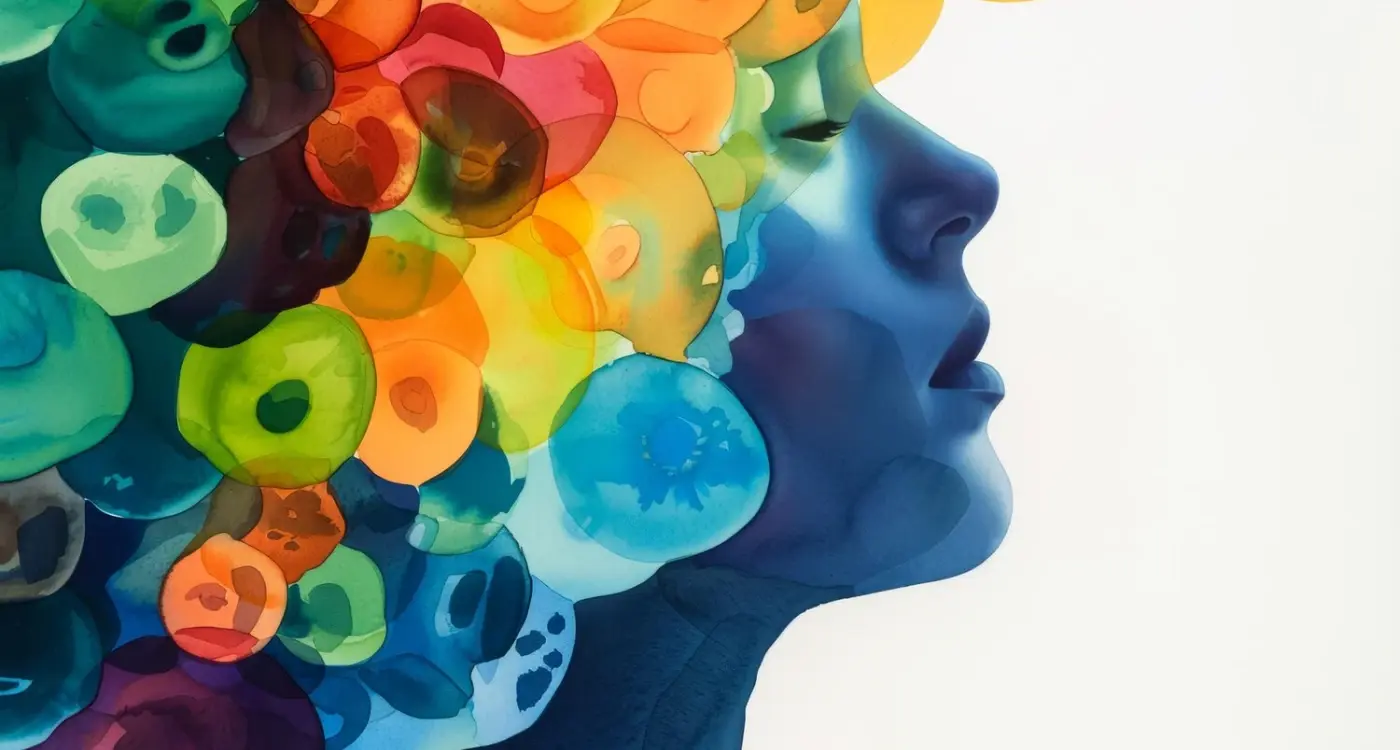How Do I Design A Dating App That Appeals To Different Age Groups?
87% of people using dating apps fall into completely different age groups, each with their own expectations, preferences, and ways of interacting with technology. That's a massive range of users you need to please if you want your dating app to succeed.
I've spent years working with clients who think they can create one design that works for everyone—spoiler alert: it doesn't work that way! Your 22-year-old university student swipes through profiles at lightning speed, whilst your 45-year-old professional takes time to read every detail. These aren't just different preferences; they're fundamentally different approaches to finding love online.
The biggest mistake I see is assuming that good design is universal—but when it comes to age demographics, one size definitely doesn't fit all
Understanding your target audience isn't just marketing jargon; it's the foundation of everything your app will become. Each generation grew up with different technology, has different comfort levels with smartphones, and frankly, different ideas about what romance should look like. Getting this right from the start will save you countless redesigns later on—and trust me, those get expensive quickly. This guide will walk you through the specific design choices that resonate with each age group, so you can build something that actually works for the people you want to reach.
Understanding Age Demographics in Dating Apps
After working with dating app clients for the better part of a decade, I've noticed something interesting—age groups behave completely differently when they're looking for love online. What works for a 22-year-old university student won't necessarily appeal to a 45-year-old professional who's recently divorced.
Each generation has grown up with different technology experiences. Gen Z users have never known life without smartphones; they expect lightning-fast interactions and visual-first communication. Millennials remember the transition from desktop dating sites to mobile apps—they appreciate both functionality and aesthetics. Generation X often approaches online dating more cautiously, valuing privacy and straightforward navigation over flashy features.
Key Demographic Preferences
- Gen Z (18-26): Video profiles, quick matching, gamification elements
- Millennials (27-42): Detailed profiles, messaging features, social media integration
- Gen X (43-58): Simple interfaces, privacy controls, relationship-focused matching
- Baby Boomers (59+): Clear typography, minimal complexity, phone support options
The biggest mistake I see developers make is designing for everyone and ending up appealing to no one. Understanding these demographic differences isn't about stereotyping—it's about recognising genuine behavioural patterns that influence how people interact with technology. Your design choices should reflect the communication styles and comfort levels of your intended users.
Identifying Your Target Audience
Getting your target audience wrong is probably the fastest way to kill a dating app before it even gets started. I've seen brilliant apps with amazing features fail spectacularly because the developers built something for everyone—which means they built it for no one. The harsh reality is that different age demographics want completely different things from their dating experience.
Your target audience shapes every single decision you'll make about your app. The colours you choose, the features you include, even how people sign up—it all comes back to who you're building this for. A twenty-year-old university student doesn't interact with technology the same way a fifty-year-old professional does, and your design needs to reflect that understanding.
Key Questions to Define Your Audience
Before you write a single line of code or sketch a single wireframe, you need to answer these fundamental questions about your target users:
- What age range are you focusing on primarily?
- How comfortable are they with technology and smartphones?
- What are their dating goals—casual meetups or serious relationships?
- How much time do they typically spend on mobile apps daily?
- What other dating apps do they currently use, if any?
Start with one primary age demographic and nail the experience for them first. You can always expand to other groups later, but trying to please everyone from day one usually results in pleasing nobody.
Design Principles for Generation Z Users
Generation Z users—those born between 1997 and 2012—have grown up with smartphones in their hands. They've never known a world without instant messaging, social media, and apps for everything. This shapes how they expect dating apps to work and look.
Speed is everything for Gen Z. They want apps that load quickly, respond instantly, and don't waste their time with complicated processes. If your app takes more than three seconds to load or requires a lengthy sign-up process, you've already lost them. Keep registration simple—ideally just a phone number or social media login.
Visual Design That Works
Gen Z loves bold colours, gradients, and visual elements that pop off the screen. Think bright purples, electric blues, and vibrant greens rather than muted corporate colours. They respond well to rounded corners, playful icons, and interface elements that feel modern and fresh.
- Use large, clear buttons that are easy to tap
- Include plenty of white space to avoid cluttered screens
- Make text large enough to read without squinting
- Add subtle animations that make interactions feel responsive
Features That Matter Most
This generation values authenticity over perfection. They want features like voice notes, video profiles, and real-time messaging. Photo filters are expected, but they prefer natural-looking enhancements rather than heavy editing tools. Most importantly, they want control over their privacy settings and the ability to block or report users easily.
Creating Interfaces for Millennial Daters
Millennials have grown up alongside technology—they've watched it evolve from dial-up internet to smartphones that can do almost everything. This means they're comfortable with tech, but they're also incredibly savvy about what works and what doesn't. When designing for this target audience, you need to strike a balance between functionality and genuine connection.
This generation values authenticity above all else. They can spot fake profiles, forced interactions, and gimmicky features from miles away. Your interface needs to feel real and honest. Clean layouts work well, but don't make everything so minimal that it feels sterile. Millennials want personality in their apps—just not the kind that tries too hard.
Focus on Meaningful Connections
Millennials are tired of endless swiping without substance. They want features that help them make genuine connections rather than just collect matches. Consider incorporating conversation starters, shared interest highlights, or compatibility indicators that go beyond surface-level attraction.
The millennial dater isn't looking for perfection—they're looking for authenticity and real connection in a world full of curated profiles
Your design should facilitate deeper engagement without overwhelming users. Think smart notifications that don't feel pushy, intuitive navigation that doesn't require a tutorial, and features that encourage quality conversations over quantity matching. Age demographics show that millennials spend considerable time on dating apps, so make that time feel worthwhile rather than wasted.
Appealing to Generation X Through Design
Generation X users—born between 1965 and 1980—bring a unique perspective to dating apps that many developers completely miss. These users grew up without smartphones but adapted to digital technology as adults, which means they appreciate efficiency over flashy features. They want apps that work well, not apps that try too hard to impress them.
When designing for Gen X, simplicity wins every time. This generation values straightforward navigation and clear messaging. They don't want to spend ages figuring out how your app works; they want to jump in and start connecting with people. Clean layouts with plenty of white space work brilliantly—avoid cramming too many elements onto one screen.
Key Design Elements That Work
- Larger text sizes and buttons for easier reading
- Clear, descriptive labels instead of trendy icons
- Traditional colour schemes rather than neon or overly bright palettes
- Straightforward messaging features without complex filters or effects
Privacy matters enormously to this age group. They lived through the early internet days and understand digital risks better than younger users. Make your privacy settings prominent and easy to access. Gen X users will abandon apps quickly if they can't control who sees their information or how their data gets used.
Designing for Baby Boomers and Mature Users
When I speak to clients about targeting mature users, there's often this assumption that older people don't use dating apps. Wrong! Baby Boomers and mature users represent one of the fastest-growing segments in online dating—they just have different needs and expectations when it comes to app design.
The biggest mistake I see developers make is treating mature users like they're technologically challenged. They're not. They simply prefer interfaces that are clear, purposeful, and don't waste their time with unnecessary bells and whistles.
Key Design Considerations
Your design choices for this age demographic need to prioritise clarity and functionality over flashy animations. Larger text sizes aren't just nice to have—they're necessary. I typically recommend minimum 16px font sizes, though 18px works better for primary content.
Colour contrast becomes critical here; what looks fine to younger eyes might be completely illegible to someone over sixty. High contrast ratios help everyone, but they're particularly important for mature users who may have declining vision.
- Use clear, descriptive button labels instead of icons alone
- Implement generous spacing between clickable elements
- Provide easy access to help and support features
- Keep navigation simple and consistent throughout the app
Always include text labels alongside icons—what seems obvious to you might not be to your target audience, and mature users appreciate clarity over cleverness.
The reward for getting this right is significant: mature users tend to be more committed to platforms they like and have higher lifetime values than younger demographics.
Balancing Multi-Generational Appeal
So you want to build a dating app that works for everyone—from twenty-somethings to those in their sixties and beyond. I'll be honest with you, this is one of the trickiest challenges I've faced in app development. Each generation has completely different expectations and comfort levels with technology.
The secret isn't trying to please everyone with the same features. That's a recipe for disaster. Instead, you need to create a flexible foundation that adapts to different user preferences. Think modular design—build core features that work simply by default, then add optional complexity for users who want it.
Adaptive Interface Design
Start with accessibility settings that actually matter. Font size controls, contrast options, and simplified navigation modes shouldn't be afterthoughts—they need to be built into your app's DNA from day one. Younger users might skip these entirely, but older users will appreciate having the choice.
Flexible Communication Options
Different generations communicate differently. Gen Z loves quick reactions and visual content; Baby Boomers prefer longer, thoughtful messages. Your app needs to support both styles without making either feel awkward or out of place.
The key is creating pathways that feel natural to each user group whilst maintaining a cohesive experience. Test extensively with real users from each generation—their feedback will reveal gaps you never knew existed.
Conclusion
After spending years working with dating app clients, I can tell you that getting the age demographics right isn't just about pretty colours and font sizes—it's about understanding what makes different generations tick. We've covered a lot of ground here, from Gen Z's need for authenticity and quick interactions to Baby Boomers' preference for clear navigation and meaningful connections.
The biggest mistake I see developers make is trying to please everyone at once. You end up with a confused mess that appeals to no one. Instead, pick your primary target audience and design for them first; then layer in features that welcome other age groups without compromising your core experience. A 25-year-old might swipe through profiles in seconds, whilst a 55-year-old wants time to read detailed information—both approaches are valid, but they need different design solutions.
What really matters is knowing your users inside and out. Age demographics give us a starting point, but real people are more complex than generational stereotypes. Test your assumptions, listen to feedback, and remember that good design transcends age when it solves real problems. The most successful dating apps I've worked on understand that connection is universal—it's just the path to get there that varies by generation.
Share this
Subscribe To Our Learning Centre
You May Also Like
These Related Guides

How Do Colours Change the Way Users Feel About Your App?

Can Good Design Really Make My App More Successful?



